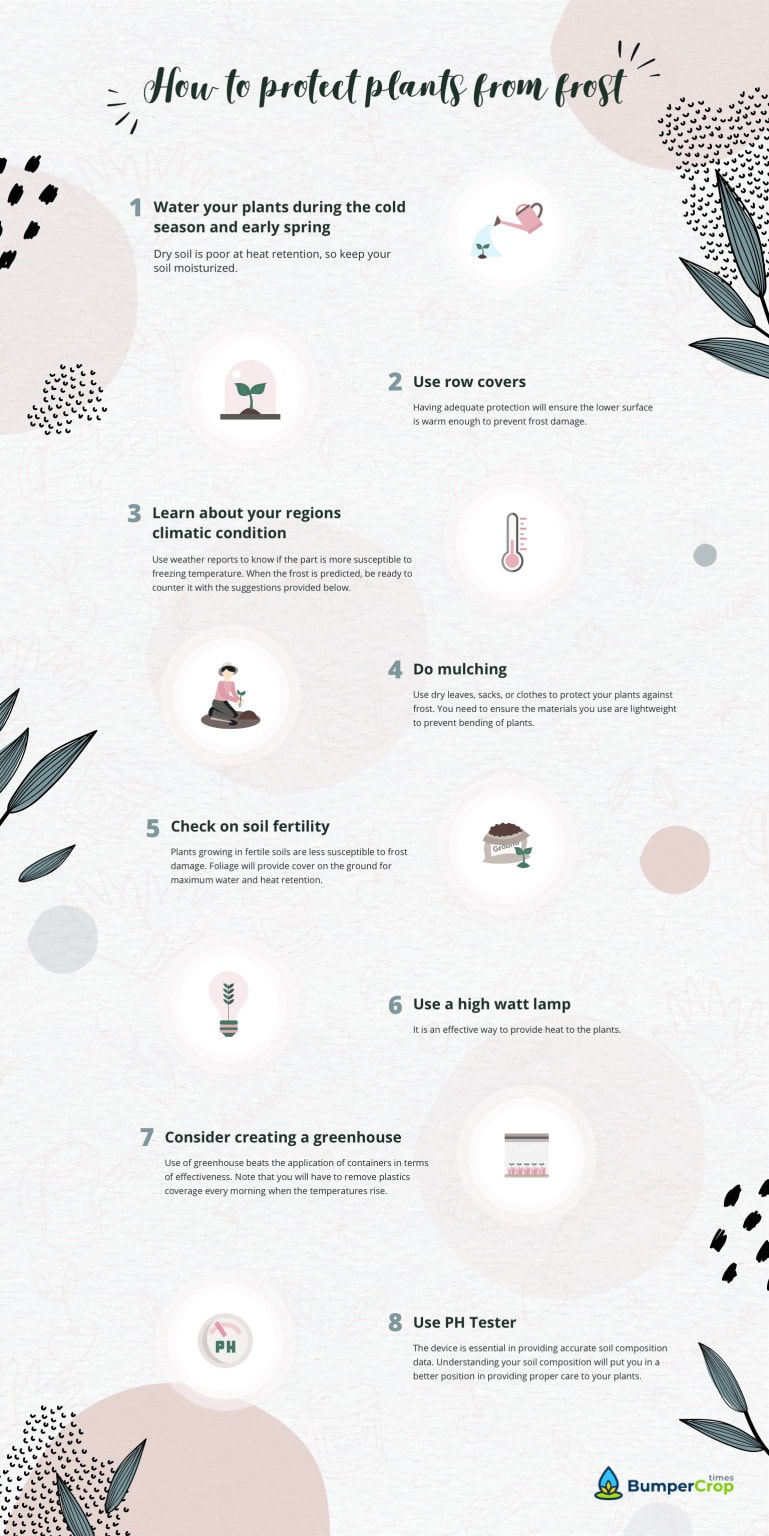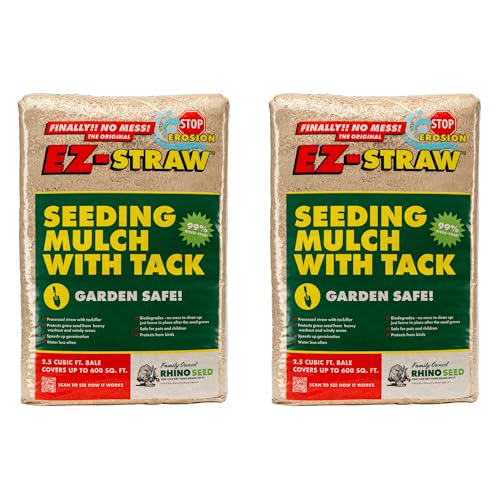The toughest season for gardening is coming, and it is important to remember that plants can be easily affected by freezing temperatures. It is important to say that when plants get exposed to frost, they need extra cushioning. Many people, however, do not know how to protect plants from frost. But there are many types of plants that are highly susceptible to frost so that you need to take measures to protect them from it. It is for this reason that I have found it essential to share my insights and recommendations on the matter.
Let’s talk about how frost affects plants so that you can understand the problem at hand. When exposed to cold, the foliage turns dark or brown, and plants start looking as if they have been burnt. Frost deprives leaves of water and prevents necessary fluids from reaching the required destinations. If you don’t measure the moisture level with soil pH meter during the cold season, you need to know at least the basic guidelines on protecting your plants from frost.
The plants that get severely affected by frost are known as tender plants. Other plants are resistant to freezing, and if you live in those frosty areas, you need to pay special attention to them during a cold season. It is hard to provide an all-in-one solution to all cold-related problems. I have, in this case, highlighted different plants and offered suggestions on how to protect a plant from frost.
How to Protect Plants from Frost Damage

Feel less threatened by frost problem by reading the recommendations below. I have provided in-depth knowledge on how to deal with cold issues. First is an overview on how to protect your plants from frost. Before we deep into the detailed analysis on protecting plants from frost, here is a general outline of methods to apply.
1. Water your plants frequently during the cold season and early spring
In terms of heat retention, dry soil is poor at that. Keeping your soil moisturized, therefore, will work like a charm if you wonder how to protect plants from frost in spring.
2. Use row covers
When comparing the extent of heat retention between the soil and crop covers, soil lags in the order. Having adequate protection will ensure the lower surface is warm enough to prevent frost damage.
Affiliate links and images placed from the Amazon Product Advertising API on 2025-11-08
3. Learn about your regions climatic condition
Use weather reports to know if the part is more susceptible to freezing temperatures. When the frost is predicted, be ready to counter it with the suggestions provided in the blog below.
4. Do mulching
Use dry leaves, sacks, or clothes to protect your plants against frost. You need to ensure the materials you use are lightweight to prevent bending of plants, which can be a stress factor in their growth. This will serve as a remedy on how to protect outdoor potted plants from frost.
5. Check on soil fertility
Soil fertility is likewise crucial in protecting against frost. Plants growing in fertile soil are less susceptible to frost damage. Foliage will provide cover on the ground for maximum water and heat retention.
6. Use a high watt lamp
To provide heat to the plants. It is an effective way, but many other approaches will beat it being easier to implement and less costly.
Affiliate links and images placed from the Amazon Product Advertising API on 2025-11-08
7. Consider creating a greenhouse
Use of greenhouse beats the application of containers in terms of effectiveness. Note that you will have to remove plastics coverage every morning when the temperatures rise. However, some greenhouses are automated such that they open up when the temperature reaches given limits.
Affiliate links and images placed from the Amazon Product Advertising API on 2025-11-08
8. Use pH tester
It is almost impossible to know the condition under which plants thrive without the help of a pH tester. The device is essential in providing accurate soil composition data, and this will help you to know about the elements that are lacking and those present in excess. Understanding your soil composition will put you in a better position in providing proper care to your plants.
Affiliate links and images placed from the Amazon Product Advertising API on 2025-11-09
Methods of Protecting Plants from Frost
Below are the time-proven ways to protect plants from freezing temperatures. Keep reading to learn more about the techniques to use.
How to Protect Plants from Frost with Plastic
Buckets are the most preferred choices when it comes to the question of how to protect plants from frost in containers. You need to remove the bottom of the pale and invert it over the plant. To ensure it doesn’t get blown off by strong winds, use a considerably weighty material over the plastic. The measure is applicable when there are few plants to work on. It should be done routinely and be removed when it gets warm.
How to Cover Plants to Protect From Frost
In the event of light frost, covering the plant with light sheets or blankets should work out. What about extreme freeze? How do you cover plants to protect from frost? In my opinion, plastic covers are better insulators as compared to clothes. They are, hence, effective for shielding plants from moderate to extreme cold.
Mulching is also applicable when the field is a bit big for the use of plastics. Ensure you do not use the plastics alone. Use a piece of clothing to prevent plants from coming into contact with the container. Also, remove the plastic cover when the temperatures rise.
How to Protect Plants from Late Frost
A late frost can become an unpleasant surprise. Thus, make sure to check weather reports daily to know the time frost is likely to appear.
If temperatures fall beyond the freezing point, mulching is the simplest way to prevent the plants from damage. Set a two-inch mulch on the plants, water the soil to about 6 inches as wet soil retains more heat as to compare with a dry one. Chop off the frost-damaged leaves when the temperatures should not drop below freezing anymore.
Affiliate links and images placed from the Amazon Product Advertising API on 2025-11-08
How to Protect Plants from Frost with Fleece
Fleece is suitable for several plants, both gardened and potted. Its easiness to handle and cut is the main reason why gardeners use fleece to cover them at cold seasons. It ensures the plants are protected from losing excess water, and this means you won’t have to water them too often.
Fleece doesn’t stand in the way of light or rainwater as plants get unhindered access to the same even with the fleece in place. More importantly, it keeps pests away from accessing your plants and gives weeds a hard time to sprout here. Once the cold season passed, remove the fleece and store it for use for the next cold times.
Types of Plants You Need to Protect From Frost
Under this guide, I have prepared the information on the different types of plants you should protect from frost. They include:
- Newly plated plants and trees
- Vegetables
- Tender plants
- Potted plants
- Garden plants
How to Protect Potted Plants from Frost
First of all, you need to consider the number of potted plants to choose the most appropriate means to take. In case, you have not many potted plants out there, you can easily move them indoors, in a garage during the night, or place them near a wall. The wall remits hot waves during the night, and it acts as a shield from the cold blowing wind.
If there are too many plants to move them routinely, consider covering them with a sack. Place them together and put tender plants at the center while frost-resistant ones around. Make sure that the sack is lightweight so that it doesn’t exert weight on your plants. Using the sack, you won’t have to wonder how to protect pot plants from frost anymore.
How to Protect Garden Plants from Frost
A garden is too big to mulch or to cover with plastic containers. Thus, three options are left to explore. Among them is the use of greenhouses. They differ in size, and it is straightforward to get one that fits your piece of land. The cost is a bit high, and it might deter many from buying greenhouses, but the purchase is worth it.
Greenhouses can only be used on level grounds. Those farming in sloppy and hilly regions might need to consider other options.
Also, you can consider using sprays. There is a wide variety of sprays that can shield your plants from frost. A single-use can be enough to protect them for up to two months. The spray provides a polymer cover on the foliage. It is the most suitable method to apply to gardens.
Using cover crops is the third option to take into consideration. The ability of the crops to retain heat is overwhelming. The crops also retain moisture to ensure the roots of your plants are well-moisturized. The measures will meet the needs of those looking for the answer on how to protect outdoor plants from frost.
How to Protect Newly Planted Plants from Frost
Exposure to harsh climatic conditions before planting will solve the problem on how to protect new plants from frost. The process is referred to as hardening. During the last fourteen days before transplanting, expose the plants to the sun, and move them indoors during the night. The leaves would be tender at the moment, and in case of frost effect, they would most likely be severely damaged. However, it is the frequent exposure to the external conditions that will make them less susceptible to frost.
How to Protect Tender Plants from Frost
Tender plants are severely affected by frost. Thus, make sure you know the extent of freezing your region gets exposed to before deciding to plant the tender crops. In case you have some tender plants already blooming in your garden, use a spray to keep the leaves protected.
If the tender plants are potted ones, ensure you put them indoors when the temperatures drop. When putting potted plants together for covering, ensure tender plants remain at the center.
How to Protect Newly Planted Trees from Frost
With newly planted trees, mulching will work wonders while watering trees regularly is also vital in protecting them from frost. The application of plastic containers is also an option to consider if the trees are not very tall but ensure the plastic doesn’t touch the foliage.
As the container may retain more heat and moisture, it should be uncovered at the top and removed when the temperatures rise. It is temporal as trees are more resilient to frost damage.
How to Protect Vegetable Plants from Frost
In the event the frost season will last only a short period, then temporal cover may be the right solution. Watering veggies is enough for protecting them against frost.
If the plants are low growing, you can consider using a mulch cover. Also, you can use lamps or some heat-emitting objects. Cover the veggies with clothes or blankets but ensure the material doesn’t get into contact with the plants.
Closing Remarks on Protecting Plants from Frost
As I end these recommendations on protecting plants from frost, I hope you have found a perfect way to fight the freezing condition that is knocking on the door. Learn more about your region’s climatic conditions to know when it’s time to start with preparations against frost damage.
You may be considering the cost of every frost protection method to use. My experience has shown that though greenhouses are a bit costly, they are the best solution on how to protect plants from spring frost. Organic methods such as mulching and the use of cover crops also help to increase soil fertility, so I recommend keeping them in mind.
When the temperature rises in the morning, ensure you remove the plastic coverages and the sacks or cloth covers if used. When left for long, covers become a stress factor for plants and will, hence, do more harm than good. Also, make sure to water your plants frequently during the cold season.
How do you go about frost protection? What other approaches have you learned when you wondered how to protect plants from frost in the garden? I will leave the comment section open for your thoughts on this matter. Share your experience with me!






